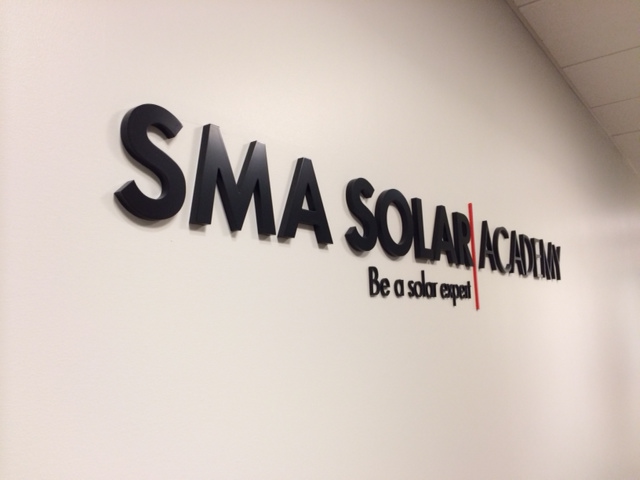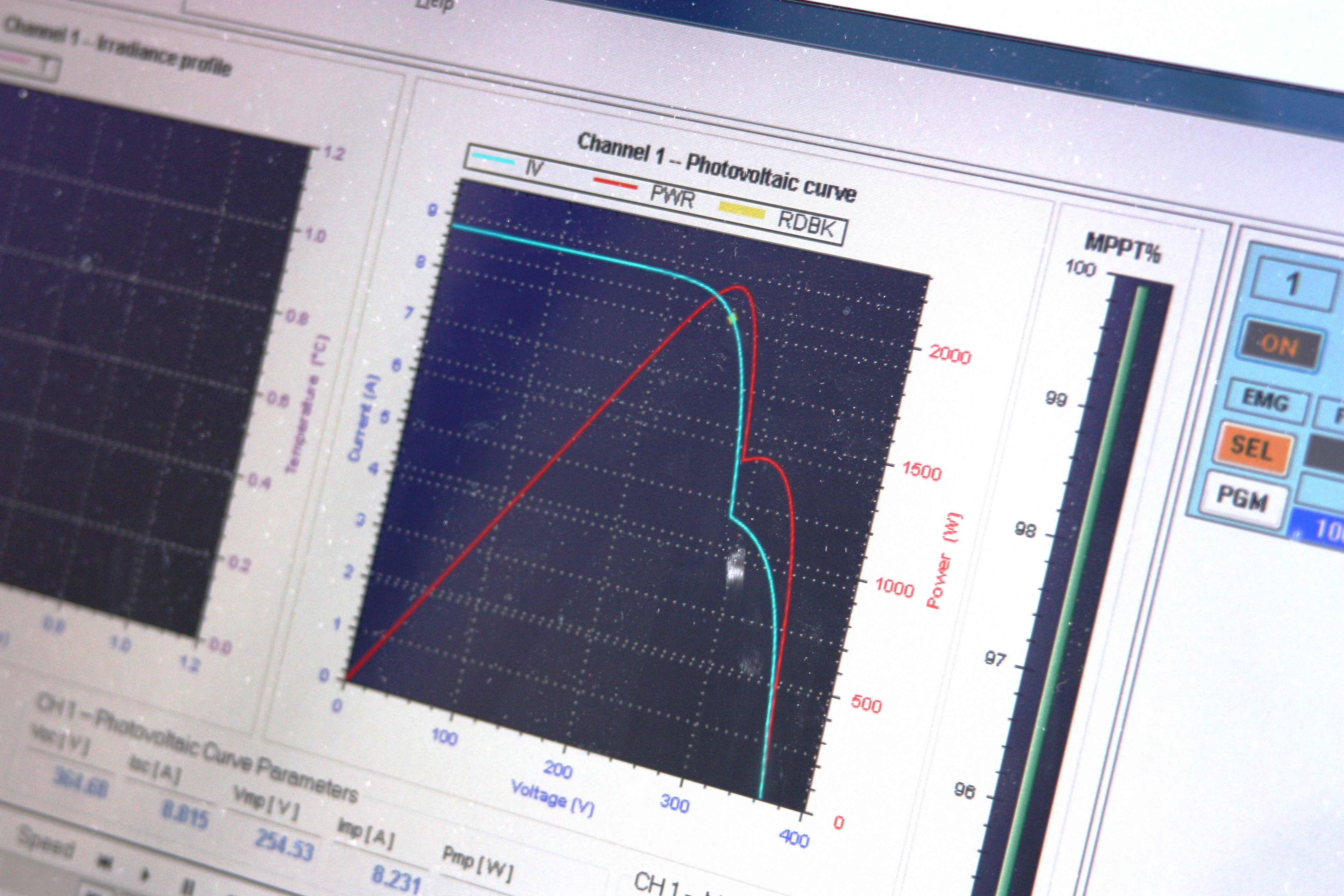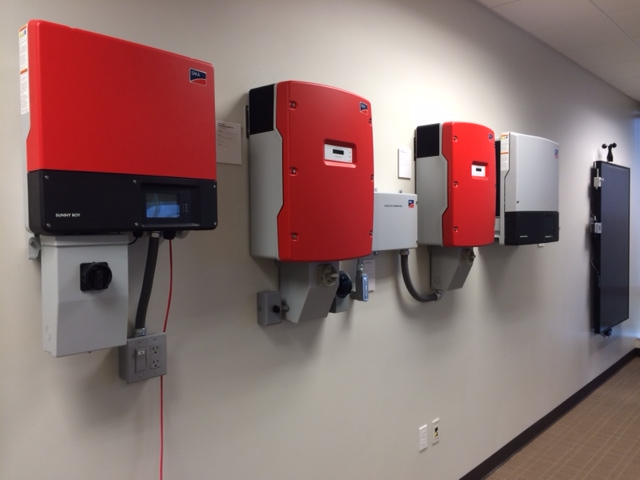Measure This! A look inside the Solar Academy’s PV simulator

Keeping up with advancements in PV systems can be a daunting task. New technologies and design concepts offer endless possibilities for system configurations.
Solar Academy trainers are often asked to test and examine scenarios with multiple inverter and array configurations. To make it all possible, our trainers use the Terra Solar Array Simulator to help answer questions, test configuration limitations and simulate extreme conditions that are too harsh for in-person testing without maintaining an inventory of modules and components.
The TerraSAS system consists of a hardware racking unit controlled by a software program in SMA’s Solar Academy. It powers transformer-based and transformerless inverters and is currently configured to power a Sunny Boy 4000TL-US, a Sunny Boy 10000TL-US or a Sunny Boy 7000-US.
Testing the Sunny Boy TL-US Series Secure Power Supply
Secure Power Supply (SPS) has been a revolutionary advancement in inverter technology. One of the tests our trainers perform is to see how a Sunny Boy 4000TL-US with SPS handles varying loads when producing its maximum-available 1,500W of standby power.
By varying electrical loads on the SPS outlet, trainers Greg Smith and Mike Mahon saw exactly how the inverter reacts to a load larger than the available standby power. Trainers successfully powered a GE side-by-side refrigerator, a small floor heater on its lowest setting, a 500W shop light and charged an iPhone. However, our trainers found the initial power demands were such that plugging in the devices in a descending order of start-up power demands was the best way to use the available 1,500W. While the SPS could power SMA’s staff fridge and more, it had to be the first load powered to accommodate the compressor’s startup demands, with the floor heater, shop light and iPhone charger added after.
When power demands exceed 1,500W, the inverter’s over-current protection trips the SPS, forcing the inverter to stop sending power for 20 seconds before re-trying until the load was reduced—just long enough to unplug something!
Testing the SPS feature allows the Solar Academy to get valuable hands-on experience and prepare them for questions from installers and system owners who’ve never seen anything like this. Secure Power Supply is an incredible feature, but one that should be tested and understood before it’s the only power supply available.
Testing MPP Tracking
Shade management from Optitrac™ Global Peak and dual maximum power production tracking (MPPT) on the TL-US series have also become hot-topics around the Solar Academy.
Most solar professionals know that partial shading causes humps, or knees, in the IV curve, causing inverters to track the local MPP, the smaller knee, instead of the global MPP, the higher knee, resulting in less energy production.
The TerraSAS allows trainers to simulate arrays with shade and other factors like time of day to test the Optitrac feature without waking before up for sunrise or reviewing system data after sunset.
Using the Optitrac function on a Sunny Boy 4000TL-US, our trainers introduced shade on part of a two-string array designed in the testing software. The Optritrac performed a sweep of the IV curve looking for “humps” and automatically adjusted to the global MPP. This intuitive action by the inverter helps produce more energy on partially shaded arrays, making the most out of the available sunlight and optimizing the system’s efficiency.
The IV curve sweep and MPP change resulted in a recovery of almost 22 percent of the lost power due to shade. For arrays with partial shading in the morning or evening, like from an air conditioner unit, chimney or roof overhang, gaining back lost energy production can dramatically increase return on investment and payback time.

The simulated IV curve now has the MPP on the global peak, producing more energy despite partial shading.
Continued Testing
Severe weather and grid outages happen without warning and are never the right situations for instructing solar professionals. With the Solar Academy’s TerraSAS system, trainers are able to create real-world simulations for almost any weather condition on almost any PV system.
The Solar Academy is proud of its commitment to training and education. These tools are a valuable resource for everyone who’s committed to making solar a way to power the world.






Do you offer online class’s on sma new technology ? Could I get on a news letter or some correspondence with you folks ?
Thanks Glenn